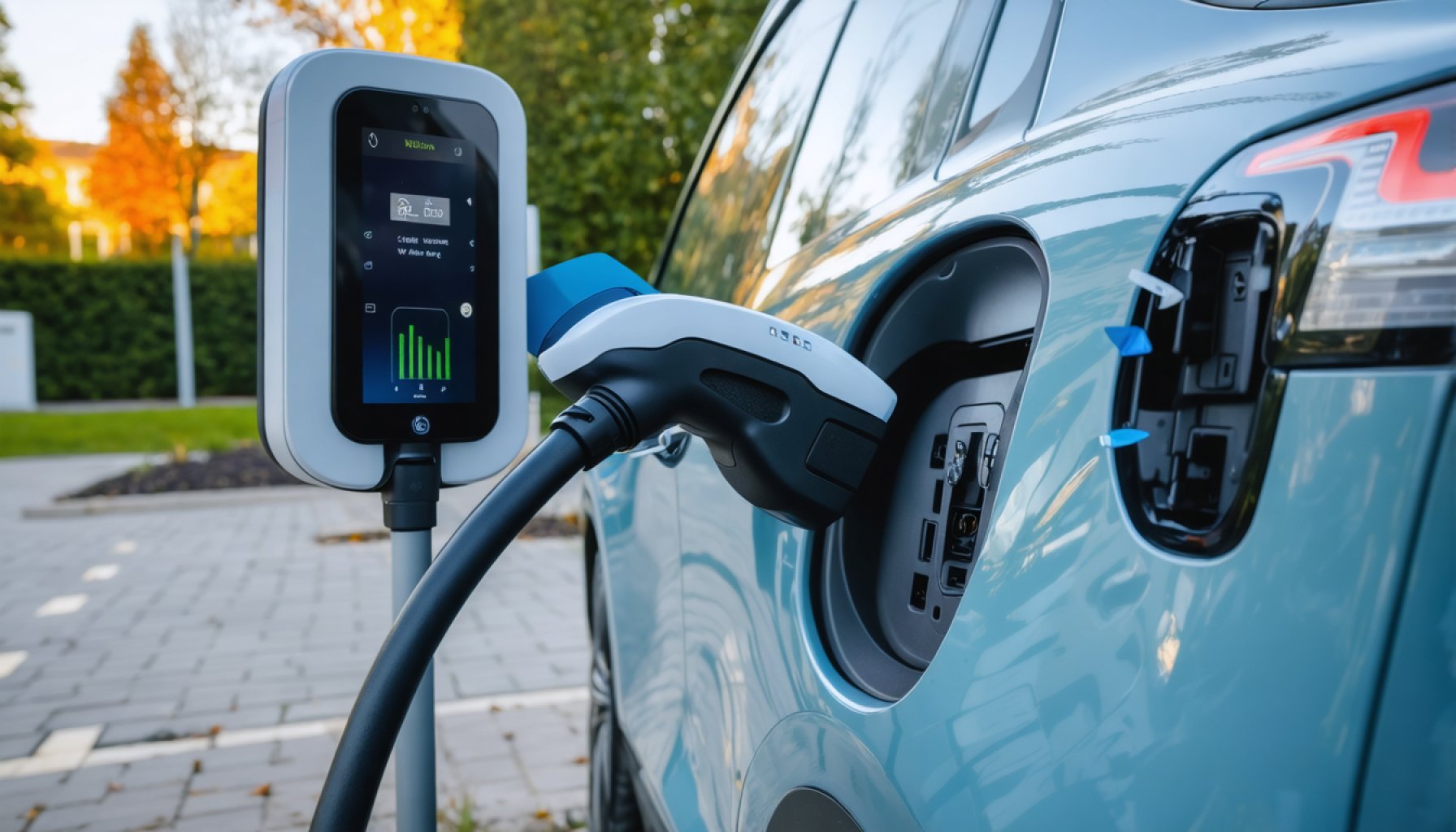
- The smart electric vehicle (EV) charger market is experiencing rapid growth, with values expected to climb from $10.25 billion in 2023 to $65 billion by 2030.
- Smart EV chargers integrate advanced communication technologies, enabling features like smartphone connectivity, grid-responsive charging, and off-peak scheduling.
- Industry leaders such as Tesla, ChargePoint, and Siemens are major players in advancing and deploying smart charging solutions.
- The Asia-Pacific region, particularly China, leads in smart charger adoption due to strong government backing and technological innovation, with the U.S. and Europe also making significant infrastructure investments.
- Smart EV chargers represent a shift towards sustainable transport, making eco-friendly choices more accessible without compromising convenience or innovation.
The race towards electrified mobility is surging forward, fueled by a catalyst both unexpected and versatile—a rapid advance in smart electric vehicle (EV) chargers. Occupying a pivotal space in the transition from fossil fuels to greener alternatives, these devices are transforming how we think about vehicle charging, combining cutting-edge technology with the urgent demands of our environmentally conscious era.
The surging growth of the global smart EV charger market is an electrifying spectacle. Valued at a formidable $10.25 billion in 2023, predictions suggest it could soar to an astonishing $65 billion by the close of the decade. This leap mirrors the brisk pace of innovation within the sector, coupled with proactive governmental efforts pushing for a cleaner, sustainable future.
Smart chargers are the unsung heroes of this electrification saga. Unlike their conventional predecessors, these nimble devices do more than replenish an EV’s battery. They are complete with communication technologies that can integrate with smartphones, adjust charging based on grid demands, and even schedule sessions to take advantage of off-peak electricity rates. They represent a future where energy efficiency and technological sophistication go hand in hand.
The allure of smart EV chargers isn’t confined to science fiction; it’s an ongoing narrative unfolding with remarkable characters. Traditional automotive juggernauts like Tesla and emerging innovators like ChargePoint and Siemens are all vying for dominance. Their commitment to refining and deploying smart charging solutions illustrates a strategic pivot towards electric mobility that promises to alter both daily commuting and long-haul journeys.
Geographically, the landscape of smart EV charger adoption is as diverse as the technologies themselves. Asia-Pacific, with China at its helm, is surging ahead, embracing electric transport with the fervor of a region synonymous with technological prowess and manufacturing might. The government’s robust backing of electric vehicles aligns seamlessly with a holistic dedication to slashing carbon footprints, making it a breeding ground for smart chargers. Likewise, the United States and Europe have not been idle, channeling significant investments into infrastructure expansion and environmental regulation compliance to facilitate a nationwide charging network.
The rise of smart EV chargers holds a lesson that’s both poignant and prophetic. They symbolize how technology can redefine lifestyle infrastructure making environmentally friendly choices effortless and accessible. From the gleaming towers of Shanghai to the suburban lanes of California, they embody a universal commitment to innovation that prioritizes sustainability without compromising convenience.
Smart EV chargers are not just the tools of today but the pioneers of a future we are racing toward. Their ability to marry environmental stewardship with technological innovation is a refreshing reminder that the road to tomorrow doesn’t have to be paved with fossil fuels. Instead, it can be powered by the brilliance of human ingenuity, one smart charge at a time.
Why Smart EV Chargers Are the Future of Sustainable Transport
Understanding the Surge in Smart EV Charger Market
The market for smart electric vehicle (EV) chargers is experiencing exponential growth, forecasted to expand from a robust $10.25 billion in 2023 to a staggering $65 billion by 2030. This surge is powered by rapid technological advancements and proactive policies aimed at promoting a sustainable future. The transformation from conventional to smart chargers signifies not only an innovation leap but also an urgent adaptation to the growing global demand for greener transportation solutions.
Key Features and Advantages of Smart EV Chargers
Smart EV chargers stand out for their advanced functionalities, which extend beyond mere charging. These chargers incorporate:
– Integration Capabilities: They sync with smartphones and smart home systems, allowing for remote monitoring and control.
– Grid Interaction: Smart chargers can regulate charging based on grid demands, ensuring energy efficiency.
– Cost-Effectiveness: Users can schedule charging during off-peak hours, reducing energy costs.
– Vehicle-to-Grid (V2G) Technology: Some smart chargers allow EVs to return energy to the grid, helping stabilize the electricity supply.
Geographic Leaders in Smart Charger Adoption
Asia-Pacific
China leads the way with aggressive support for electric mobility, backed by government incentives aimed at reducing the carbon footprint. This region is quickly becoming a hub for manufacturing and innovation in smart charging technologies.
Europe and the United States
Both regions are investing heavily in expanding charging infrastructure. The European Union’s stringent environmental regulations and the US’s Clean Air Act are key drivers in promoting electric vehicle adoption and charger deployment.
Pressing Questions and Expert Inquiries
What Are the Limitations of Current Smart EV Chargers?
While smart chargers offer numerous benefits, they still face hurdles such as high initial investment costs and the need for widespread infrastructure upgrades. Compatibility with different vehicle models and potential cybersecurity issues are also areas of concern.
What Are the Industry Trends in Smart Charging?
There is an increasing focus on integrating renewable energy sources into charging systems. Additionally, advanced software that optimizes energy distribution and predictive maintenance is becoming more prevalent in smart chargers.
Real-World Use Cases and Recommendations
– Residential Charging: Homeowners can reduce electricity costs by installing smart chargers that utilize off-peak energy rates.
– Commercial Infrastructure: Businesses can benefit by offering smart charging points, attracting EV owners and aligning with corporate sustainability goals.
Actionable Recommendations
1. Invest in Smart Chargers: For potential homebuyers and businesses, investing in smart EV chargers can lead to substantial long-term savings and environmental benefits.
2. Stay Updated: Consumers should monitor advancements in smart charging technologies to capitalize on emerging features like V2G.
3. Government Incentives: Check for available rebates and incentives in your region to reduce the upfront costs of installing smart chargers.
Conclusion
Smart EV chargers are revolutionizing the way we approach electric mobility, offering sustainable, efficient, and technologically advanced solutions. As we continue to embrace this electrifying future, it’s imperative to leverage the broad capabilities of smart chargers to ensure a clean, green tomorrow.
For further updates on electric mobility and related technologies, explore the insights shared by industry leaders like Tesla, ChargePoint, and Siemens.



